Yup, I've got a ticket in my hands to be at the Robotics Society of America's Summer Robot Games and Expo. Why? Well, Solarbotics wants to see what other roboticists are up to "out there", so our first stop will be San Francisco July 27th. So if you're in the Fisherman's Wharf area that weekend, […]
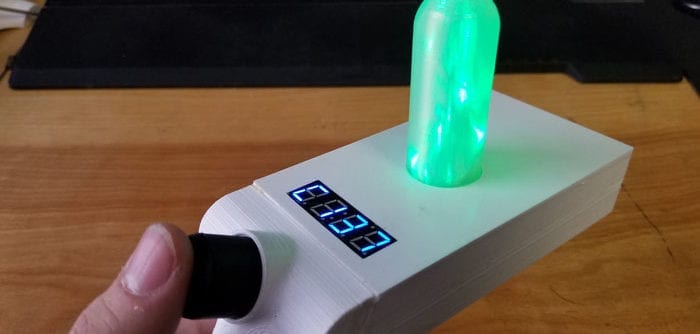
Rick and Morty Portal Gun
 Every year a group of my friends have an engineering Secret Santa. The rules are simple: make something cool for under $20 that requires engineering to complete. In years past we’ve seen Google cardboard VR headsets that are 6DOF, match stick rockets, 3D printed fans that explode when used, 3D printed rockets with cardboard launch controls, and a host of other semi dangerous, partially completed projects that are more than a little interesting.
Every year a group of my friends have an engineering Secret Santa. The rules are simple: make something cool for under $20 that requires engineering to complete. In years past we’ve seen Google cardboard VR headsets that are 6DOF, match stick rockets, 3D printed fans that explode when used, 3D printed rockets with cardboard launch controls, and a host of other semi dangerous, partially completed projects that are more than a little interesting.
This year I decided to create a portal device from the Popular Adult Swim show Rick and Morty. The device opens portals from one dimension to another by spinning a knob to select the target dimension number on a 7-segment display. With a background in electrical engineering, I thought that this was an excellent project to start tinkering on! Plus, the 3D printer needed a workout.
Parts List
• 1x Rotary Encoder
• 1x 7-Segment Serial Display
• 4x 10mm Green Diffused LED
• 1x 4.5m Green LED String
• 1x 2xAAA Battery Holder
• 5.0V Micro Boost Regulator
The Build
I based this build on Sparkfun's 7-Segment Serial Display, which has the desirable feature of being designed around the ATmega328P, a.k.a. the Arduino chip. I replaced the stock library that controlled the 7-segment display with my own, allowing me to use the excess power to control my project's logic flow.
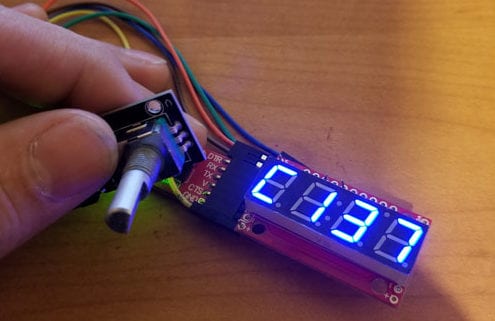
To mimic the functionality of the portal device in the show, I combined the 7-segment display with a rotary encoder. I used a library online to read the grey code of the encoder and turn it into a basic clockwise/counter clockwise selection knob. The encoder's wheel also acts as a button for simple spin/set operation (seen above, showing the default dimension, C137).
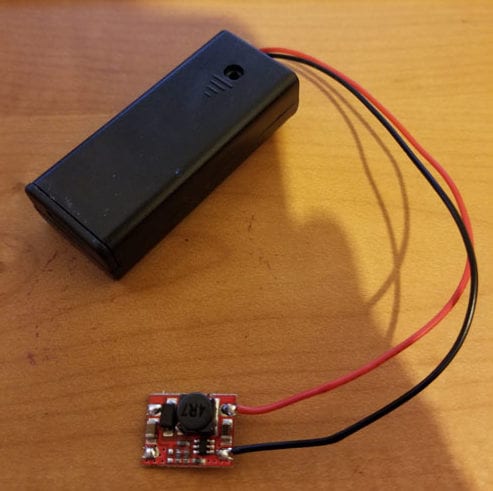 Power comes from a simple AAA battery pack with built-in on/off switch & pre-tinned leads soldered to a small 5V boost converter used to power the 7-segment, processor, and LEDs.
Power comes from a simple AAA battery pack with built-in on/off switch & pre-tinned leads soldered to a small 5V boost converter used to power the 7-segment, processor, and LEDs.
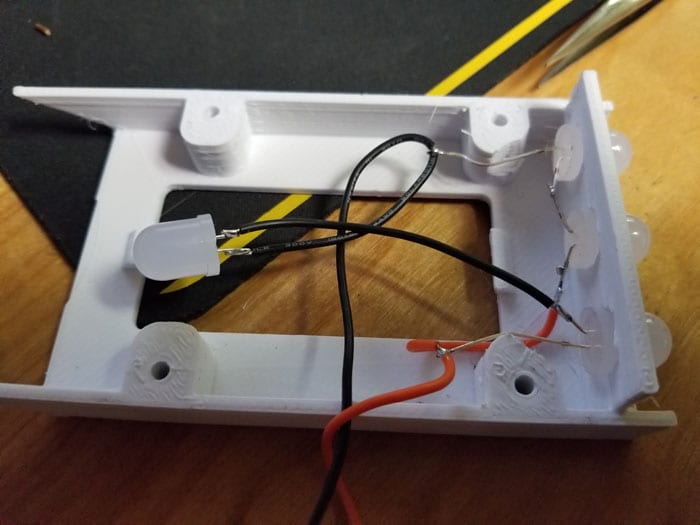
Although there are 3D STEP files online, I designed up my own implementation of the portal device in Solidworks before printing them on our Kossel Delta 3D printer. The CAD files need polish before we release them to a 3D repository, and we'll update the blog entry when they're available.
The large 10mm green LEDs round out the effects nicely. LED voltage drop calculations showed wiring them up 2 in series, 2 in parallel for a nice green glow without requiring current limiting resistors.
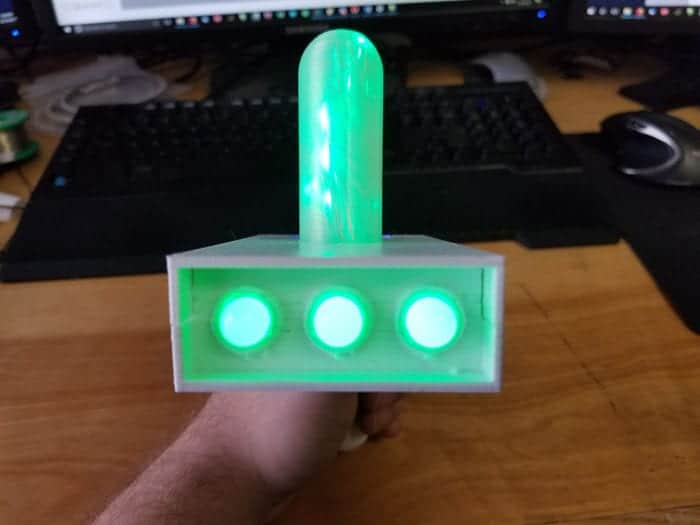
To enhance the glow to the top tube, SuperFlex LED strings were wired directly to the 3V battery source and stuffed unceremoniously into the tube. And as with all quick DIY projects, everything was assembled into the portal device with superglue.
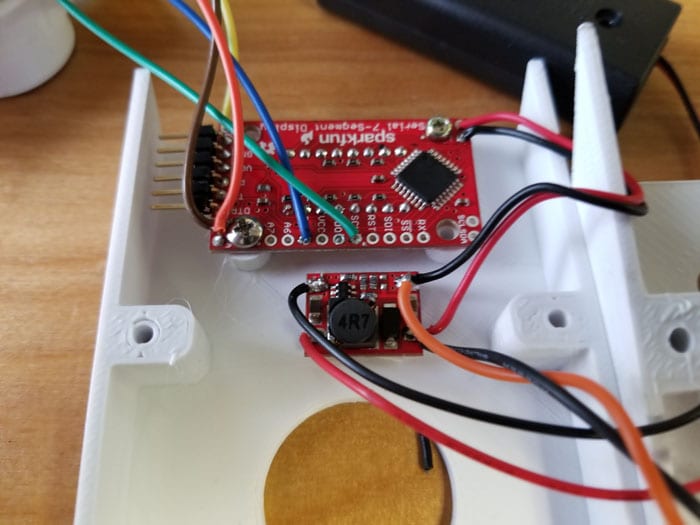
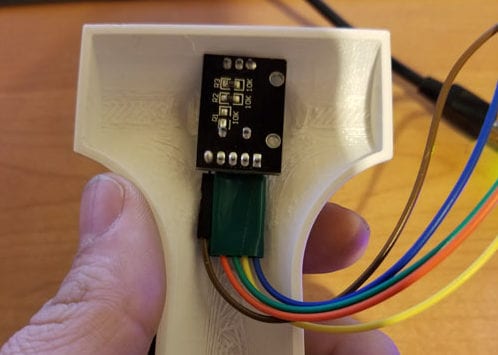
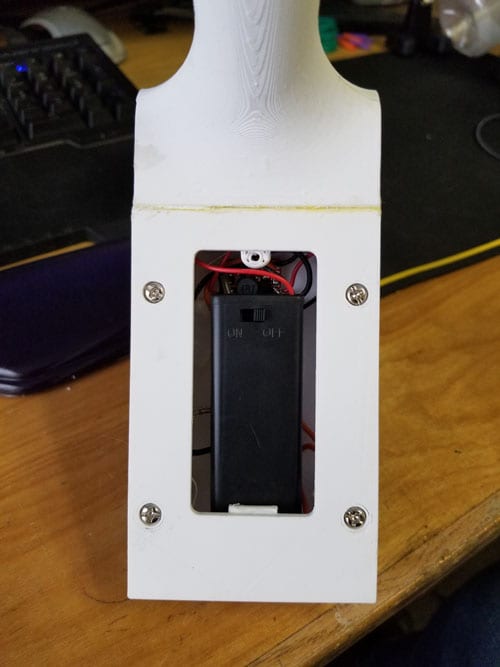
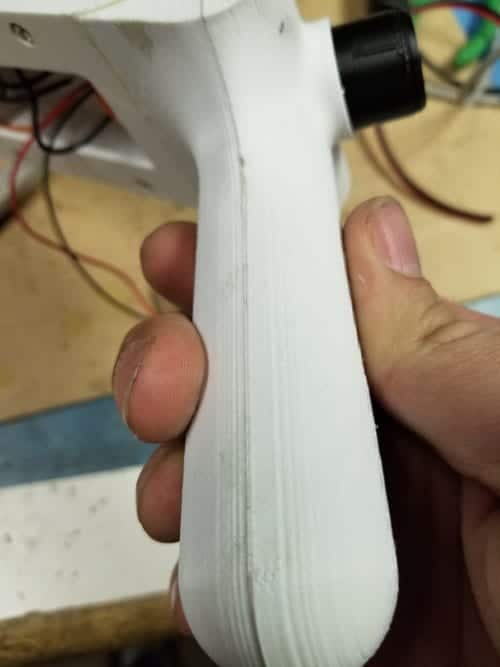
The last step of the build was to add a little door at the bottom of the portal device so that the battery pack can be accessed.
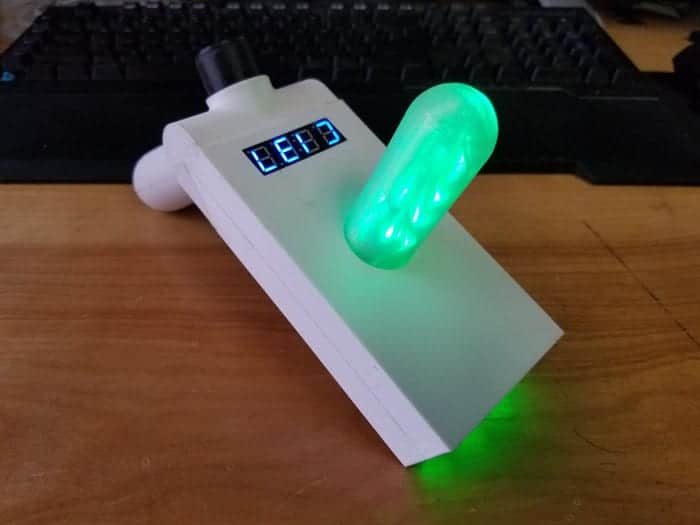
Although not quite perfect, it turned out rather well considering I only had two sleepless nights to get it ready. Revision 2 requires adjusted CAD files, a wiring schematic, and better matched tube/front LED colors.
C'mon Morty - there's something I need you to do....
MORE POSTS
... is here! Check it out in all it's glorious wooden-ness (Russian birch-ness even!): Starting today the Marble Machine is available at our website for backorder, and fully available for purchase starting May 18. The Solar Marble Machine is a result of collaboration of Solarbotics with MSRaynsford, whose original design was reworked as a solar-powered […]
We gave Grant a bit of the afternoon to put together a demo robot using the GM10. What project? Ah, the venerable Herbie, of course! Construction details (and a big pic) are on the motor detail link. Oh, and there's a video too! Read More...
Halloween is over - lets eat up our pumpkin leftovers, get ready for gift giving season and stock up on some vitamin D for the winter season! For new product today we got Third Hand. That's important. It’s a kit that comes with surgical thread and a little anesthetic fluid as well as a handy […]
Solarbotics, Ltd. is not responsible for misprints or errors on product prices or information. For more information, please see our Terms and Conditions.
Warning: This product contains chemicals known to the State of California to cause cancer and birth defects or other reproductive harm.
Please visit www.P65Warnings.ca.gov for more information. This item was manufactured prior to August 31, 2018.

